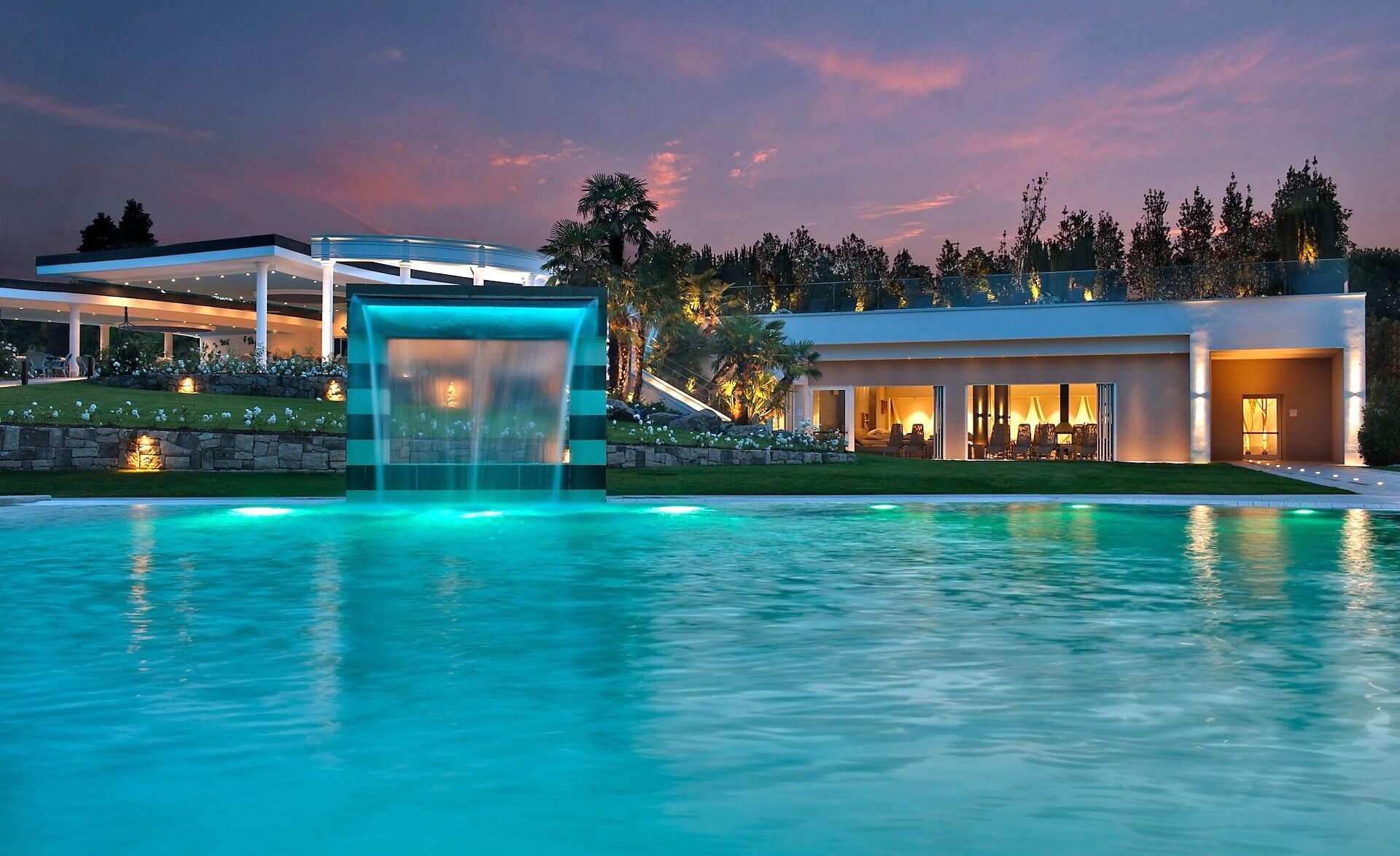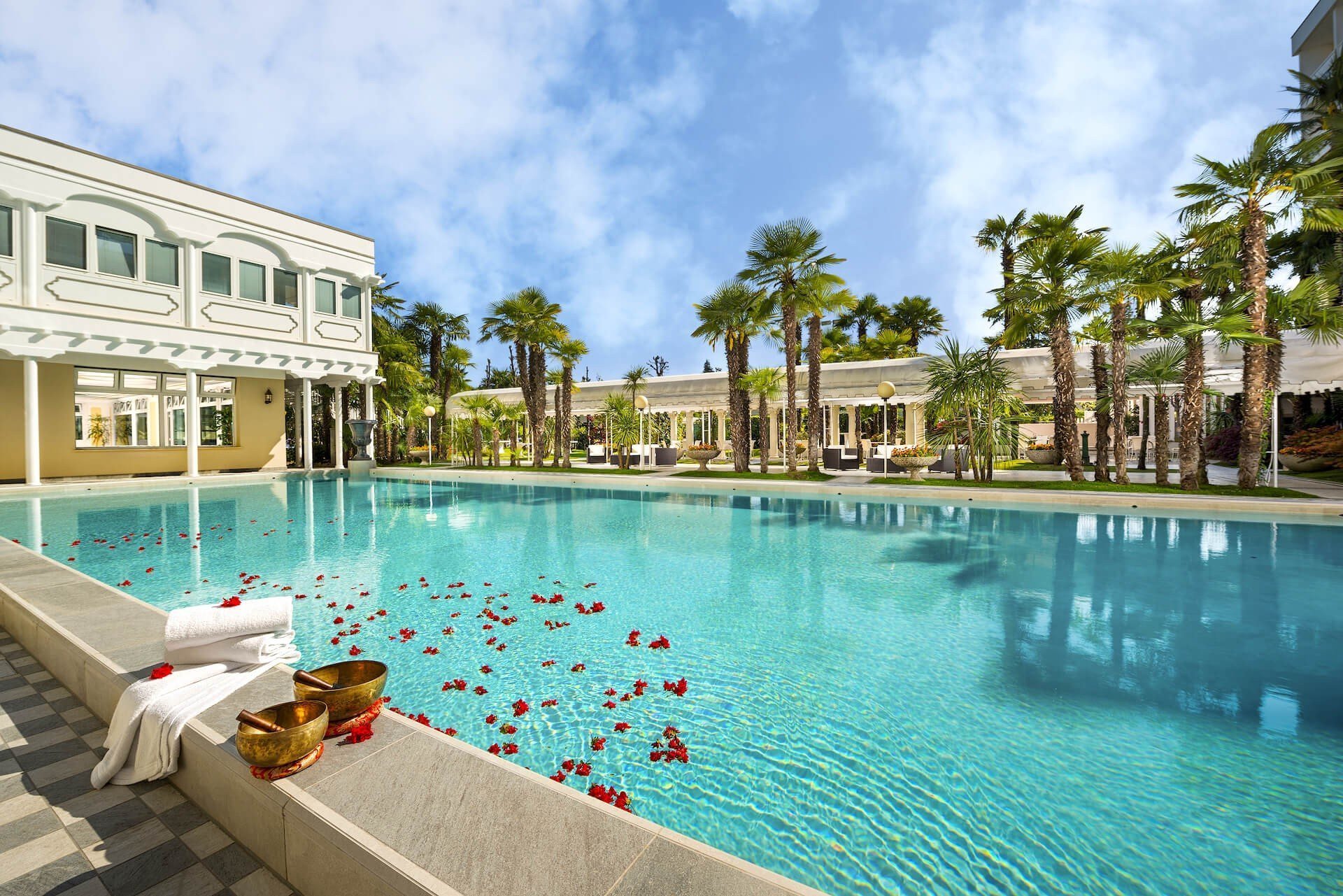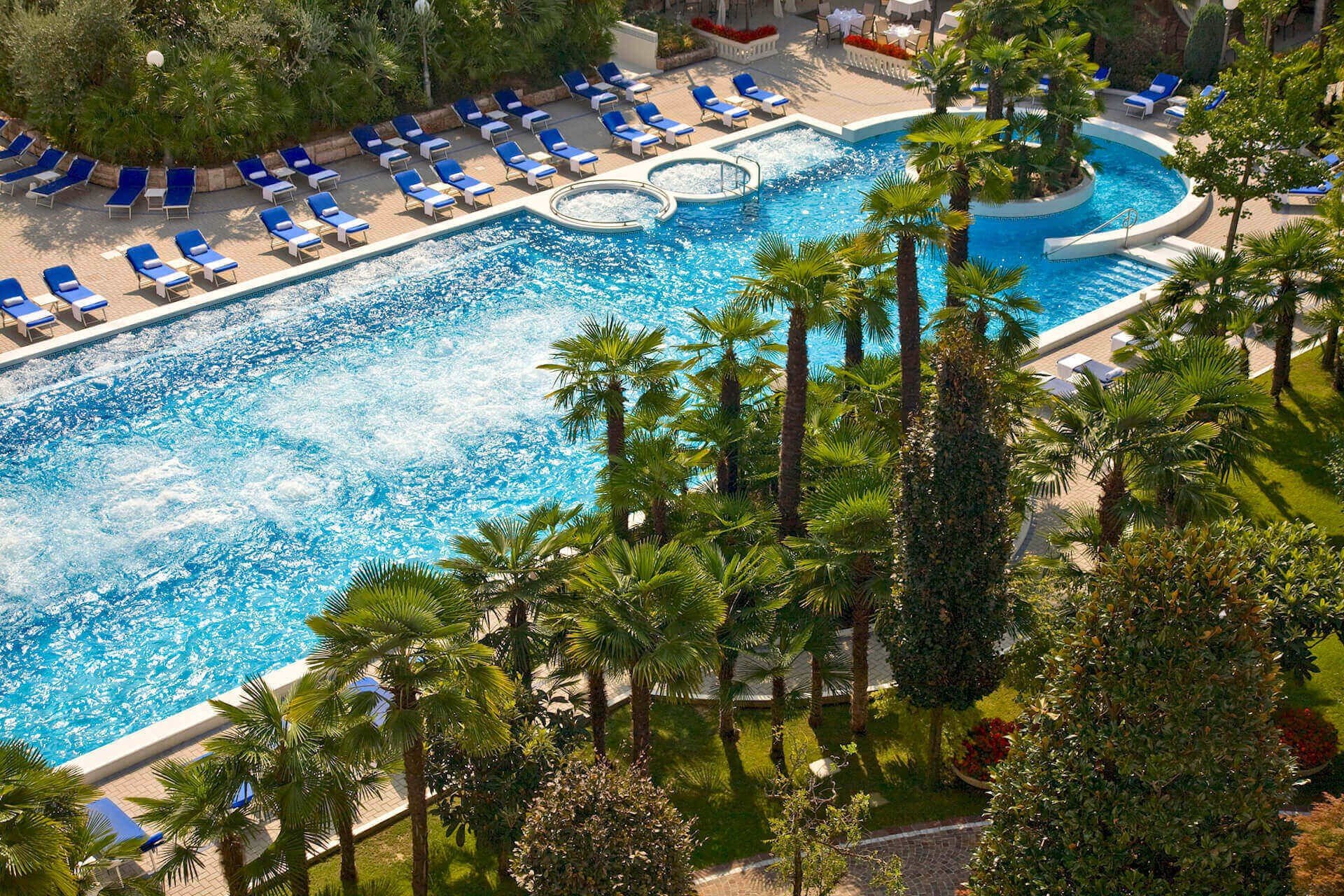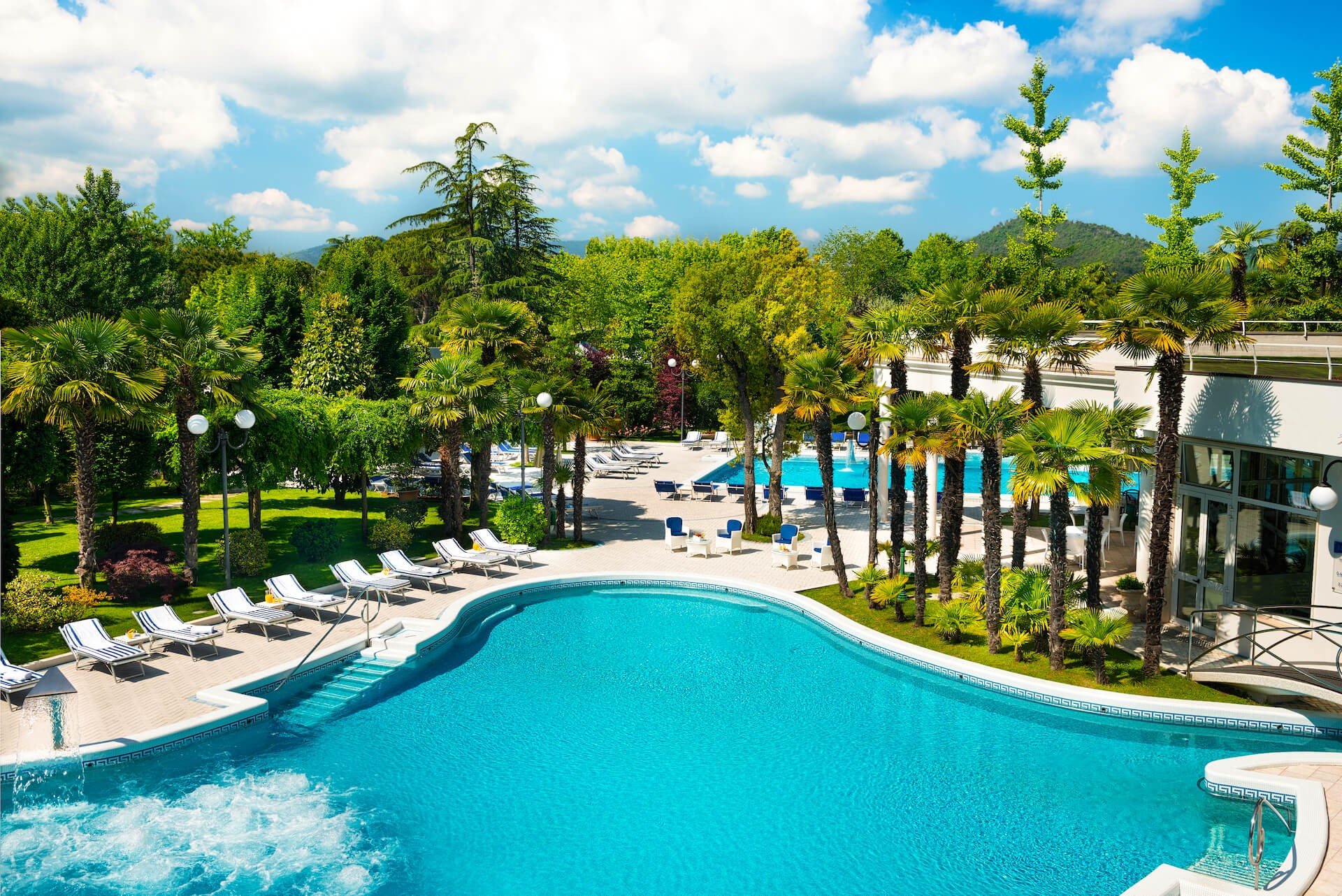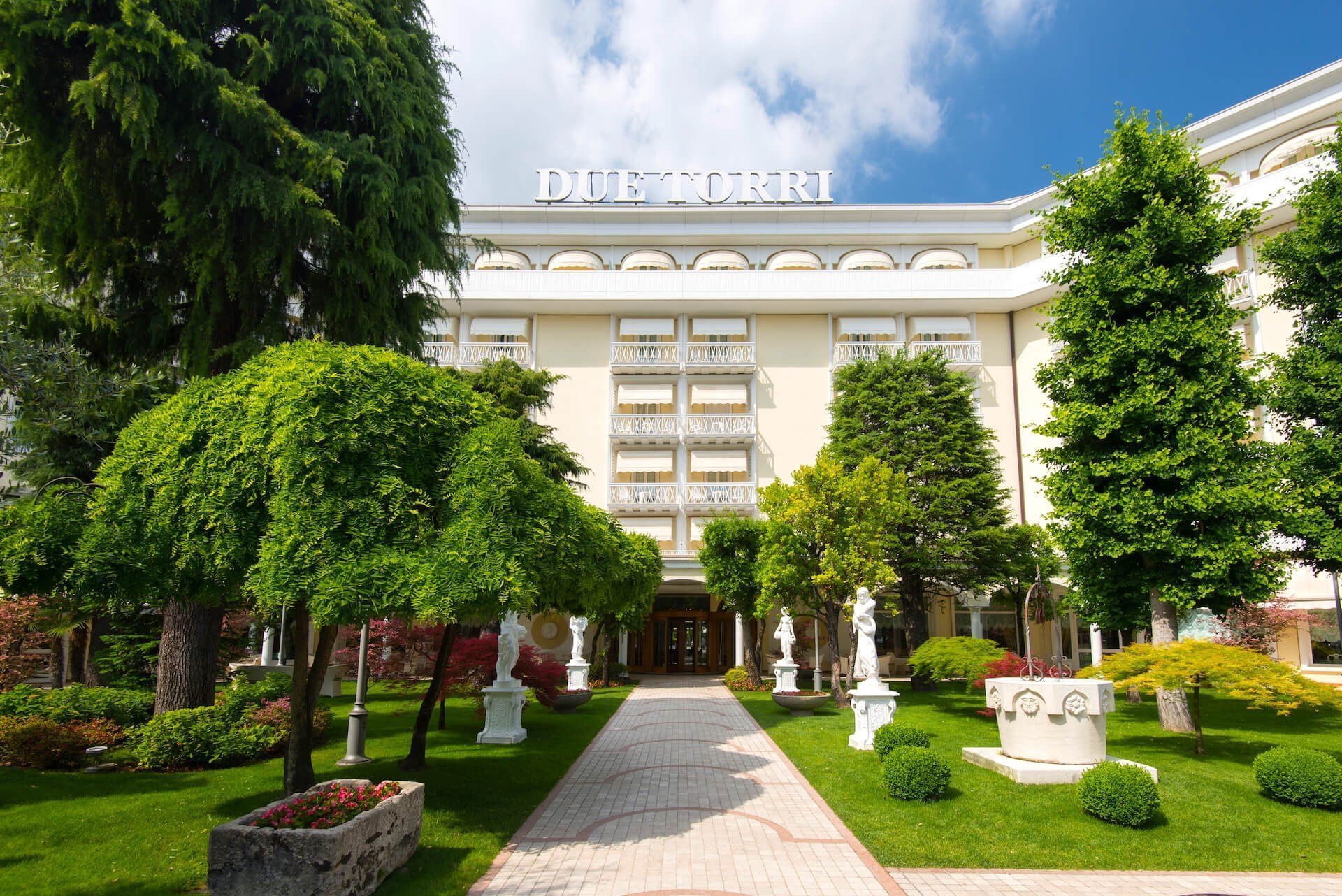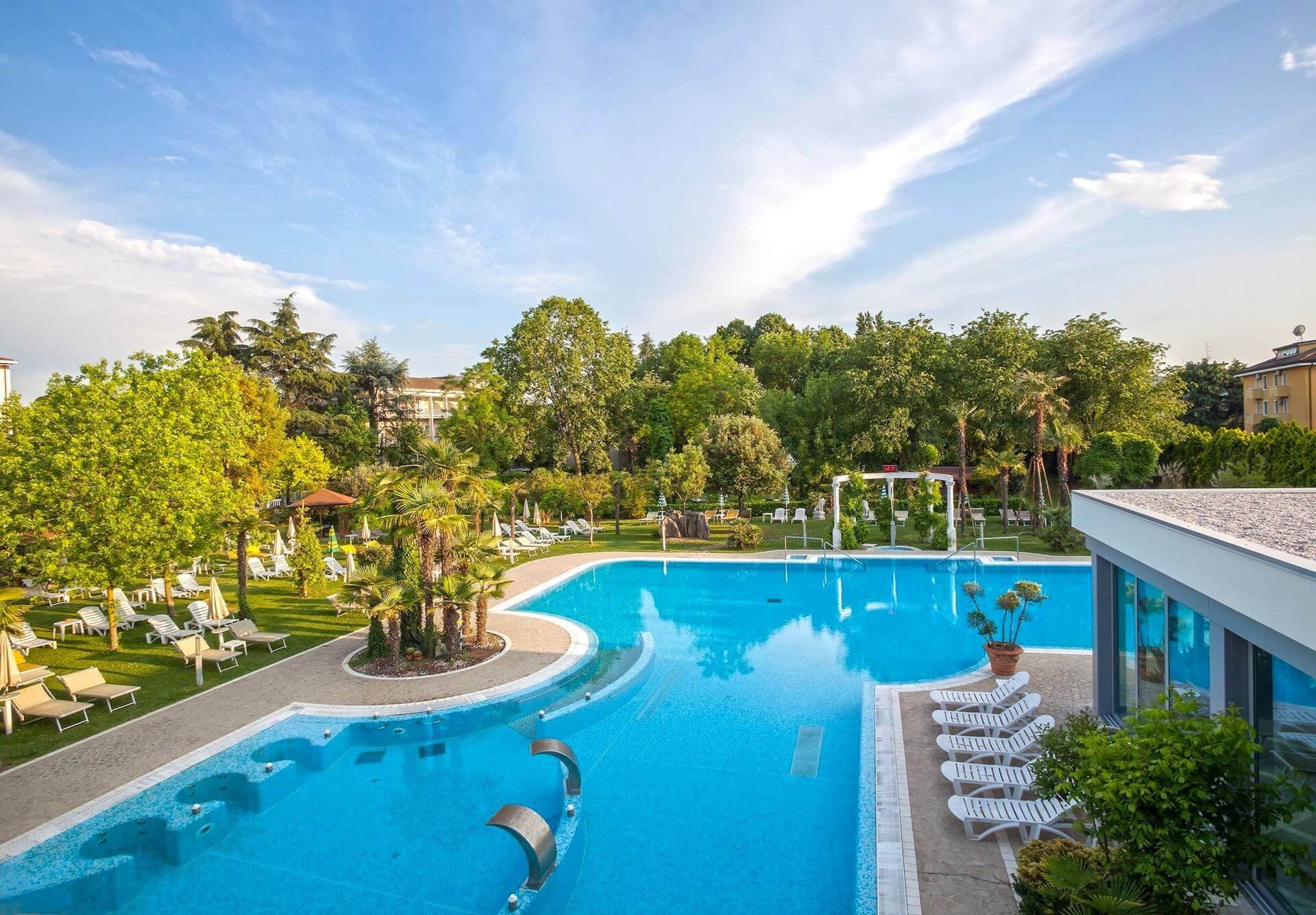
First text Italy second text
Informācija
Italy is the European country with the largest number of thermal spas, internationally appreciated for the quality and effectiveness of the services and treatments offered. Its particular geographical conformation contributes to the formation of numerous thermal springs with different concentrations of mineral salts, capable of curing a wide range of ailments and diseases. Historically, Italy is the country where thermalism was born, as early as the ancient Romans spas were frequently used for the hygienic and curative purpose. Nowadays there are highly specialized spas all over the Peninsula. Among the main thermal centers we can mention: Euganean Spas (Abano Terme and Montegrotto Terme), Terme di Ischia, Montecatini Terme, Terme di Fiuggi, Terme di Merano, Terme di Sirmione, Terme di Chianciano.
Priekšrocības
-
Italy is unique in the world from a historical-artistic, naturalistic, and cultural point of view as well as for thermal resources.
-
The excellence of its thermal tourism offer, combined with the mild climate, tourist attractions, and food and wine culture, attracts an increasing number of tourists to Italian spas.
-
Italy has a long history of thermalism, starting from the ancient Romans who were the inventors of the spa.
-
The particular geographical conformation of the Italian Peninsula contributed to the formation of thermal springs throughout its territory with different properties that allow the treatment of numerous disorders and diseases.
-
The spa destinations offer numerous sporting opportunities: golf, tennis, horse riding, mountain biking, and so on.
Galerija
Italy
Italy is the European country with the largest number of thermal spas, internationally appreciated for the quality and effectiveness of the services and treatments offered. Its particular geographical conformation contributes to the formation of numerous thermal springs with different concentrations of mineral salts, capable of curing a wide range of ailments and diseases. Historically, Italy is the country where thermalism was born, as early as the ancient Romans spas were frequently used for the hygienic and curative purpose. Nowadays there are highly specialized spas all over the Peninsula. Among the main thermal centers we can mention: Euganean Spas (Abano Terme and Montegrotto Terme), Terme di Ischia, Montecatini Terme, Terme di Fiuggi, Terme di Merano, Terme di Sirmione, Terme di Chianciano.
Most popular SPA locations in Italy
Discover the best spa locations in this country.

Abano Terme
242,22 €
par 1 nakts, 1 numurs

Abano Terme rises on the slopes of the evocative Euganean Hills, near Venice. The city is part of the Euganean Spas - the most important and ancient spa in Europe and among the first in the world for the unique healing properties of thermal waters and mud. The thermal water of Terme Euganee is classified as bromo-iodic salt and, together with thermal mud, allows the treatment of many diseases, eg. of the muscular and osteoarticular apparatus, of the respiratory tract or of the nervous system. The city has a long spa tradition and has a vast tourist offer, both for hotel facilities and for additional services.
Pasakaini
1102 Atsauksmes
Latest hotel reviews in Italy
Viesi atsauksmes pēc uzņemšanas.
Lieliski
Udo
Austria
Alles wunderbar bis ins kleinste Detail (zum Beispiel die Matratze ist eine Dorelan, das Personal ist sehr nett und das Restaurant ist ausgezeichnet ...) Leider konnte ich nicht draußen bleiben, ohne von Bremsen angegriffen zu werden. Die SCHWALBEN, die einst ihre Nester unter dem Dach hatten und die Anwesenheit von Bremsen verhinderten, wurden leider vertrieben. Einige Nester wurden wahrscheinlich durch früheres Management zerstört (was gegen das Gesetz verstößt). In der Hoffnung, dass die Notwendigkeit der Anwesenheit des RONDINI aus tausend Gründen verstanden wird, hoffe ich, zurückkehren zu können: Es ist ein wunderbarer Ort.
Lieliski
Ivan
Italy
Questo è stato il nostro 2° viaggio qui. Una volta lo scorso autunno e nuovamente questa primavera. Si tratta di un hotel meravigliosamente rilassante completare con la loro Primavera di zolfo di stare vicino alla piscina e rilassarsi dopo il viaggio. Il tempo è stato perfetto. Le camere sono confortevoli e il personale è molto cordiale. C'è una spa completa con servizi da unghie e capelli per applicazioni mediche complete e tutto in tra. Abbiamo solo cenato utilizzando il menu del bar per entrambi gli spuntini di tarda mattinata e pranzo. Questo albergo si trova nelle colline della Toscana e ci sono molte piccole città per esplorare che sono a pochi chilometri dall'hotel. Ci torneremo di sicuro.
Lieliski
Раиса
Ukraine
Классический отель в итальянском стиле, с изысканным спа и очень вкусной кухней. Нам понравилось практически всё. Спасибо очень милому персоналу.
Lieliski
Сергей
Russia
Отель нам понравился, это исторический отель начала 20-го века, отреставрированый, красивые холлы, ресторан. Красивый сьют в романтическом венецианском стиле с балконом с видом на сад. Посетили врача, было предписано шесть процедур грязевой терапии и сеансы физиотерапии. Почувствовали замечательное действия грязи, полное расслабление. Так бы хотелось вернуться снова сюда.
Pasakaini
Ксения
Russia
Отличная еда, богатейший буфет салатов, красиво организован ужин при свечах. Большие термальные бассейны с гидромассажами. Спа отличное. Хорошее качество и разумная цена.
Pasakaini
Марина
Russia
Отель хороший, особенно спа центр, выглядит очень элегантно, большой выбор процедур. Ресторан порадовал своей вкусной итальянской кухней. Завтрак богатый, подавали у бассейна. Вкусный кофе в баре. Рядом находится гольфовое поле, сюдаприезжают много гольфистов.
Noderīga informācija
Mūsu raksti ir ļoti noderīgi un informatīvi.

Water Classification Based on Salt Composition
Sulfur waters: they contain sulfur in various combinations. They administered by drinking cure, balneotherapy, mud, inhalations, vaginal irrigations. They mainly treat otorhinolaryngological and dermatological diseases. The leading Italian spas with sulfurous waters are Terme di Saturnia, Terme di Sirmione, Terme di Montepulciano.
Sodium water or sodium chloride: mainly contain sodium chloride. In some, sodium sulfate and sodium bicarbonate, calcium and magnesium found. Are mainly administered by drink and indicated for the treatment of gastrointestinal and respiratory tract diseases. The spas with saltwater are for example Barano d'Ischia, Casamicciola, Forio d'Ischia, Ischia Porto, Lacco Ameno, Montecatini Terme.
Sulfate waters: these are waters rich in sulfur. They are administered primarily by drink, but also by mud and rectal irrigation, indicated for the treatment of diseases of the gastrointestinal, respiratory and renal systems. They are found, e.g., in the thermal centers of Barano d'Ischia, Bormio, Casamicciola, Casciana Terme, Chianciano Terme, Forio d'Ischia, Lacco Ameno, Montecatini Terme.
Bicarbonate waters: they originate from calcareous rocks and contain mainly bicarbonates. The majority are bicarbonate - calcic and usually used for hydrophilic therapy; the most concentrated also for balneotherapy, nasal showers, vaginal and rectal irrigations. They are used to fight diseases of the gastrointestinal tract, problems with diuresis, liver function. The centers with bicarbonate waters are for example Bormio, Casamicciola, Casciana Terme, Terme di Chianciano, Montecatini Terme, Terme di Montepulciano.
Radioactive waters: they contain a small amount of radon and can treat diseases of the nervous and osteoarticular system. They used for drinks, inhalations, vaginal irrigations, balneotherapy, and mud therapy. The spas based on radioactive waters are Abano Terme, Bormio, Casamicciola, Forio d'Ischia Ischia Porto, Lacco Ameno, Merano Thermal Baths, Montegrotto Terme, Sant'Angelo d'Ischia, Terme di Sirmione.
Arsenical-ferruginous waters: they present iron in great abundance and arsenic in traces. They administered by drink, balneotherapy, inhalations, irrigations, muds. Indications: iron deficiency anemia, lymphatic diathesis, convalescence, skin diseases, neuritis, thyroid disease. The centers with arsenical-ferruginous waters: Levico, Pré-Saint-Didier.
Salso-bromo-iodic and salso-iodic waters: they are strongly mineralized of marine origin. They contain sodium chloride and other minerals in different concentrations. They administered by balneotherapy, mud, inhalations, and irrigations. Excellent for treating respiratory, vascular, gynecological, otorhinolaryngological problems of the osteoarticular system. Enhance the immune system, the spas with these types of waters: Abano Terme, Montegrotto Terme, Ischia Porto, Sant'Angelo d'Ischia, Terme di Sirmione, Terme di Montepulciano, Salsomaggiore Terme.
As for thermal muds in Italy, they are the result of local clay maturation in special tanks with bromidic iodine saltwater. During this process, which lasts about 90 days, the chemical composition of the clay is modified, and many algae and micro-organisms developed which are responsible for the production of glycolipids with an anti-inflammatory and fungicide action, reinforced by the high temperature of the mud. Mud therapy is an unequaled natural treatment to bring benefits to the muscular apparatus (extra-articular rheumatism) and osteoarticular (osteoarthritis and other degenerative forms). The main centers that use thermal mud are Abano Terme, Montegrotto Terme, Terme di Sirmione, Terme di Ischia, Terme di Montecatini.

A Brief History of Italian Thermalism
The Italian Peninsula and its islands have always been the crucial crux in the movement of goods and people. Thanks to the mild climate and natural resources. The strategic position in the Mediterranean and the thousands of kilometers of coastline that allowed for the creation of safe harbors for ships, given the geographical conformation of the peninsula, before the Roman era, it was divided between several small kingdoms, including the Kingdom of the Etruscans. The latter knew the healing properties of thermal waters in present-day Tuscany and Umbria. The Greeks, in search of new pieces of fertile land, settled in southern Italy and Sicily. In Ischia, they discovered the benefits of local springs by building temples dedicated to divinities at each spa resort. But the real turning point in the exploitation of thermal resources came with the advent of the Romans: Roman doctors such as Galen, Celso, or Pliny classified the thermal waters based on characteristics and therapies. Numerous public Thermae were built for hygienic, recreational and curative purposes. Today we can find the remains of the baths throughout the national territory, for example, The Baths of Caracalla in Rome; the spa in the Euganean Hills area in Ischia, in Sirmione Terme, and many other places.
With the fall of the Roman Empire and with the spread of Christianity, which invited people to flee from hedonism, there was a decline of the baths as a cultural and social phenomenon, and during the Middle Ages, the thermal practice was limited to therapeutic use only. There are reports of the restoration of the springs and the enhancement of the spas in Abano, Salsomaggiore, and Montecatini. In addition to the bath and the hydrophilic treatment, they began to resort to the inhalation of vapor coming from the sources and the applications of the muds that deposited nearby.
The thermal cures gain greater fame during the Renaissance, thanks above all to the development of the press, which allowed a rapid spread of hydrological works. More specific actions were beginning to recognize the various types of water, and specific gynecological treatments introduced. In the fifteenth century, the illustrious doctor Ugolino Simoni from Montecatini founded modern hydrology. Among the characters, who visited the baths, stands Michelangelo, who in 1549 went to Fiuggi to treat kidney stones.
The eighteenth-century is the century of the experimental method also applied to hydrology, and the remarkable development of chemistry and physics allowed a more thorough study of the various waters. The spas were considered to be the real care centers.
Starting from the beginning of the 1900s, the spa resorts were transformed from health centers into resorts and social life, becoming a tourist product, recognized as thermal stations and cities able to attract customers from distant places. Frequented by the exponents of high society and aristocracy; therefore, the thermalism of the modern age defined as elite thermalism. This also had a noticeable reflection on the architecture of the centers: the luxurious and fascinating Liberty style could be admired in the spas, public buildings, high-level recreational facilities, parks, and gardens. In that period, dated 1890 to 1930, thermalism was of a "ludic" type because the spa mainly given the function of relaxation and entertainment, as well as a more general conception of "feeling good." In the fascist period, there was the c.d. Social thermalism, when the baths included in health policies recognizing the therapeutic use of thermal waters at a national level, this led in the second post-war period, to the thermalism assisted with the extension of the therapies, at contained costs. To the entire population, the treatments almost exclusively paid by the NHS. Since the 1980s, thermalism has undergone an evolution, passing from the concept of care and therefore of "social" or "assisted" thermalism to the idea of spas, intended primarily as health tourism to become the current wellness tourism, intended as a genuine holistic experience of caring for the psychophysical aspect of the individual. Nowadays, the practice of thermalism is associated with environmental education and enhancement of local and Mediterranean culture. We tend towards what is defined by the literature as a total quality of life.





































